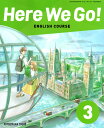光村図書 中学3年生 Here We Go! Unit1 Part4の本文の日本語訳と重要箇所の解説です。
Unit1-1,1-2,1-3の解説はこちらからご覧ください。
>中3Here We Go! Unit1 Part1 本文和訳
>中3Here We Go! Unit1 Part2 本文和訳
>中3Here We Go! Unit1 Part3 本文和訳
- Unit1 Part4 本文と日本語訳
- Unit1 Part4 重要事項の解説
- Let me introduce elementary school life in Rwanda to you.
- Rwanda is in east Africa and close to the equator.
- It is called “the country of a thousand hills.”
- At our school, some students start classes at 7:20, a.m. and go home at 12:20 p.m. The other students start classes at 12:40 p.m.
- That is because we don’t have enough teachers or classrooms.
- The school schedule is divided into two groups.
- One has seven classes in the morning, and the other has six in the afternoon.
- Usually, we don’t have a recess after every lesson.
- We don’t have school lunch, either.
- They are multilingual.
- Unit1 Part4 まとめ
Unit1 Part4 本文と日本語訳
Hi, I’m Nori. Let me introduce elementary school life in Rwanda to you.
「こんにちは,僕はノリです。あなたにルワンダの小学校生活を紹介させてください。」
Rwanda is in east Africa and close to the equator.
「ルワンダは東アフリカにあって,赤道に近いです。」
It is called “the country of a thousand hills.”
「ルワンダは『千の丘の国』と呼ばれています。」
From the hills, you can see lots of beautiful stars at night.
「丘からは,夜にたくさんの美しい星を見ることができます。」
People are nice, kind, and friendly here.
「ここの人はすてきで,優しくて,親しみやすいです。」
Our school stands on top of one of the hills. It has about 2,500 students.
「ある丘の頂上に僕たちの学校はあります。約2,500人います。」
At our school, some students start classes at 7:20, a.m. and go home at 12:20 p.m.
「僕たちの学校では,一部の生徒は午前7時20分に授業が始まって,午後12時20分に帰宅します。」
The other students start classes at 12:40 p.m.
「他の生徒は午後12時40分に授業を始めます。」
That is because we don’t have enough teachers or classrooms.
「なぜなら,僕たちの学校には十分な先生と教室がないからです。」
The school schedule is divided into two groups.
「学校の時間割は2つのグループに分けられています。」
One has seven classes in the morning, and the other has six in the afternoon.
「1つは午前中に7個の授業があって,もう1つは午後に6個の授業があります。」
Usually, we don’t have a recess after every lesson.
「ふつう,各授業の後に休憩時間はありません。」
We don’t have school lunch, either.
「給食もありません。」
In Rwanda, students need to learn four languages – Kinyarwanda, Swahili, French, and English.
「ルワンダでは,キニヤルワンダ語,スワヒリ語,フランス語,英語の4言語を生徒は学ぶ必要があります。」
English became an official language of Rwanda in 2009.
「英語は2009年にルワンダの公用語になりました。」
Children start to learn English in kindergarten.
「子どもたちは幼稚園で英語を学び始めます。」
They are multilingual.
「彼らは多言語を話します。」

Unit1 Part4 重要事項の解説
Let me introduce elementary school life in Rwanda to you.
“let 人(もの) 動詞の原形”で「人(もの)に~させてあげる,人(もの)が~するのを許す」となります。
今までは高校英語で習っていましたが,中学校で習うようになった重要な文法です。
必ず動詞の原形を使う点に要注意です!
文法の解説は別記事で詳しくしているので,そちらもご覧ください。
Rwanda is in east Africa and close to the equator.
“east”は「東」ですね。ちなみに“west”が「西」(ジャニーズWESTのwestです),“north”が「北」,“south”が「南」となります。
“be close to~”で「~に近い」という意味です。この文では“and”によって”in east Africa”と”close to the equator”が繋がっています。“equator”は「赤道」です。
It is called “the country of a thousand hills.”
この文では受動態が使われています。
“of”は“A of B”で「BのA」というように後ろから前に訳します。
At our school, some students start classes at 7:20, a.m. and go home at 12:20 p.m. The other students start classes at 12:40 p.m.
“Some~”, “The other~”は対応していて,「一部の~,他の~」といった意味になります。
ある集団(複数形)を2つに分けてあげるイメージですね。
よく使う表現なので,この組み合わせを見つけられるようにしっかり覚えておきましょう!
That is because we don’t have enough teachers or classrooms.
“That is because~”で「なぜなら~だからだ」という表現になります。
“because”は接続詞なので必ず2つの文を使う必要がありますが,”That is because~”は1文で完結させることができます。
“enough”は「十分な」という形容詞です。
The school schedule is divided into two groups.
この文でも受動態が使われていますね。
“divide A into B”で「AをBに分ける」という意味です。今回は受動態なので,Aにあたる“The school schedule”が主語になって ,「2つのグループに分けられる」となっています。
One has seven classes in the morning, and the other has six in the afternoon.
“One~, and the other…”で「1つは~で,もう一方は…だ」という重要表現です。
2人(2つ)のうち,一方ともう一方という意味合いになります。
さきほどの“Some~”, “The other~”との違いに注意しましょう。
Usually, we don’t have a recess after every lesson.
“recess”は「休み,休憩時間」という名詞です。
“every”は単数名詞の前に付けて「各~」となります。“every 単数名詞”は三人称単数扱いになることもしっかり覚えておきましょう!
We don’t have school lunch, either.
文末の“, either”は否定文に対する同意で使われます。肯定文に対する同意は“, too”を使います。
以下に例文を挙げます。
“I like sushi.” – “I like it, too.”
「私は寿司が好きです。―私も好きです。」
“I don’t like sushi.” – “I don’t like it, either.”
「私は寿司が好きではないです。―私も好きではないです。」
They are multilingual.
“multilingal”は「多言語使用の」という形容詞です。
ちなみに「2言語使用の」は“bilingal(バイリンガル)”,「3言語使用の」は“trilingal(トリリンガル)”と言います。3言語以上からは“multilingal(マルチリンガル)”と言うことが多いそうです。
Unit1 Part4 まとめ
以上がUnit1 Part4の日本語訳となります。
この単元では受動態や“let 人(もの) 動詞の原形”など,ここまでで扱った文法が登場しています。
それぞれ正確に訳せるように,各文法をしっかりと理解していきましょう!
>中3Here We Go! Unit1 Part1 本文和訳
>中3Here We Go! Unit1 Part2 本文和訳
>中3Here We Go! Unit1 Part3 本文和訳
何か分からない点や他に解説してほしい点があれば,お気軽にコメントしてください!





コメント